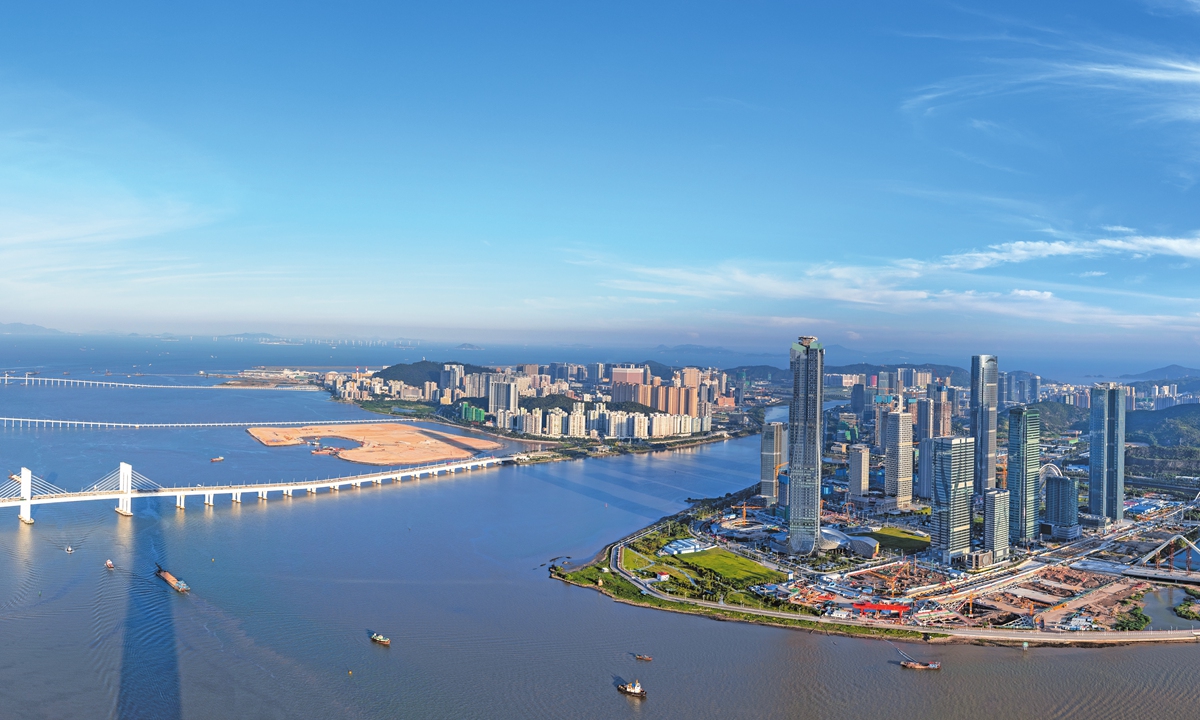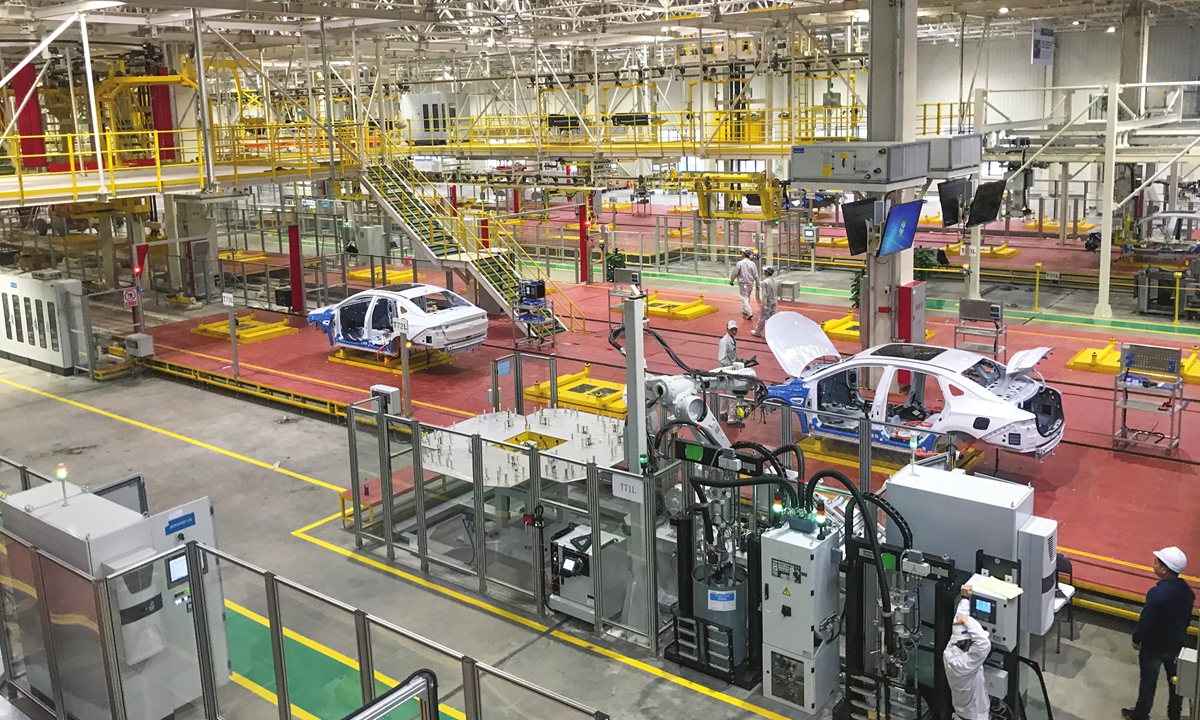"To understand today's China, one must begin by understanding China's history. Guangzhou is the cradle of China's democratic revolution and the vanguard of China's reform and opening-up," in a recent meeting, Chinese President Xi Jinping told French President Emmanuel Macron in Guangzhou, capital of South China's Guangdong Province.
The remarks were made before China's top leader concluded a four-day inspection tour of the province from April 10 to 13.
In the past decades, Guangdong has set a model of Chinese modernization for the rest of the country, and the model also has global repercussions, observers pointed out.
From Zhanjiang to Maoming to Guangzhou, Xi traveled thousands of kilometers across the western part of the province and visited mangrove forests, ports, enterprises, and factories, while having in-depth exchanges with ordinary factory workers, farmers, and technicians. The trip not only provided a direction for the province which is long considered a pacesetter of China's reform and opening-up in taking the lead in Chinese modernization, but also opened a crucial window for the world to learn how Chinese modernization is essentially different from the capital-centered Western development path, experts said.
"China offers an alternative path featuring collective prosperity and harmony between humanity and nature, different from some developed countries' polarized and materialistic models focusing on external expansion and plundering," Wang Chenxing, a research fellow with the Chinese Academy of Social Sciences told the Global Times.
China's chosen development model meets humanity's challenges and offers other countries, especially developing ones, a choice for achieving social and economic progress, Wang said.

The Guangdong-Hong Kong-Macao Greater Bay Area Photos: VCG
Harmonizing ecology and economyDifferent from his previous inspection tours which often include visits to local farmlands, Xi started off his latest inspection trip at a mariculture base in Donghai Island in Zhanjiang to learn how it utilizes both land and sea resources to guarantee food security.
In 2030, Guangdong is expected to increase output of seafood annually to 2.01 million tons, the equivalent of raising 30.45 million pigs or 1.54 billion ducks, based on the same amount of protein, according to official reports.
Xi required elaborate efforts in developing the breeding industry as it serves as the foundation of the development of modern agriculture and aquaculture. More should be done to develop deep-sea aquaculture equipment and the smart fishing industry, Xi said, calling for the further upgrading of the marine fishery, according to a report by the Xinhua News Agency.
Xi's concern in ecological conservation extends to the second stop of his Zhanjiang tour - the Zhanjiang Mangrove National Nature Reserve, the largest and densest natural reserve of its kind in China.
Xi referred to the mangrove forests as a national treasure and urged for its careful protection "like how people protect their own eyes." He emphasized the need for persistent efforts toward green development, with aims to build a beautiful China while also contributing to the preservation of the global environment.
Guangdong's experience in advancing its economic boom and ecological progress demonstrates how China seeks the kind of modernization that promotes harmonious coexistence of man and nature, said Chinese experts.
Guangdong's model in pursuing modernization reflects China's new development philosophy of innovation, coordination, green development, opening-up, and sharing, Liu Ying, a research fellow at the Chongyang Institute for Financial Studies at Renmin University of China, told the Global Times.
Xi has long envisioned a homeland where man and nature can live in harmony, with economy and ecology thriving side by side. He has also made environmental protection one of the five main policy areas in his quest to build an "ecological civilization," as China advances in its aim to reach peak carbon emissions by 2030 and carbon neutrality by 2060.

Egrets spotted in Zhanjiang, South China's Guangdong Province Photo: VCG
Modernization of common prosperityXi chose the western part of Guangdong as the focus of his latest inspection tour as that part of the province is less developed than the Pearl River Delta, known for the high concentration of manufacturers and high-tech companies, according to media reports.
Xi stressed during the trip that Guangdong's development depends not only on the Pearl River Delta, but also on the joint development of the northern, eastern, and western parts of Guangdong.
"Chinese modernization is aimed at promoting common prosperity and addressing imbalanced development among regions," Xi said, according to Xinhua.
Such an aim is reflected in Guangdong's endeavors to improve regional connectivity through better transportation infrastructure, such as Xuwen Port which Xi also inspected. The port is a key project that facilitates the collaborative development of Guangdong with the neighboring island province of Hainan.
In China, imbalanced development typically manifests itself in the disparity between urban and rural areas, and between western and eastern areas.
To Xi, the root cause of imbalanced development between western Guangdong and the Pearl River Delta largely resides in industries.
After visiting a village known for growing lychees and learning about local rural revitalization, Xi said that to advance Chinese modernization, it is imperative to comprehensively advance rural revitalization and effectively address the imbalance between the urban and the rural areas and between regions. He called for more resources allocated to assist less developed areas, promote social etiquette and civility, and to improve the quality of life for the people.
"Guangdong's practice manifests a core feature of Chinese modernization - achieving common prosperity for all Chinese people. That is how people of Guangdong Province, under the guidance of the Communist Party of China (CPC) Central Committee, can inspire a concerted effort to turn the province into a region whose overall GDP far exceeds that of many other countries worldwide," Liu said.
Guangdong has set a model for the rest of the country to promote Chinese modernization which emphasizes all-round development and a people-centered philosophy, Wang remarked.

A new-energy vehicle factory in South China's Guangdong Province Photo: VCG
Modernization of independence with opennessAnother characteristic of Chinese modernization is that China pursues strategic independence and continued openness by beefing up its self-reliance in science and technology, modernizing its industrial system while maintaining an opening-up policy to the outside world, especially in the post-pandemic era, experts said.
During an inspection tour of the GAC Aion New Energy Automobile Co Ltd, Xi listened to reports about the company's progress in making technological breakthroughs, valuing its efforts in developing higher-end, smarter, and greener manufacturing when he visited the carmaker's R&D center.
Amid the US-led containment of China, "it is expected that some Western countries will keep containing China's technology in the near future, which requires China to improve its independent innovation ability on the path of modernization, and seek to overtake the curve," Wang told the Global Times.
However, pursing Chinese modernization is not "closing the doors" to the outside world as the country's development is closely connected to global modernization, and instead of encouraging rivalry, China has proposed an alternative path that exceeds different ideologies, experts said.
On April 12, when Xi went to Guangzhou and visited the South Korean multinational electronics company LG Display's manufacturing base, he said that China's market strengths will become more apparent as the country quickens the formation of a new development pattern and further improves the business environment amid the backdrop of sluggish global economic growth, as Xinhua reported.
Xi encouraged foreign investors to seize opportunities and achieve greater business success by coming to China, particularly Guangdong and the Guangdong-Hong Kong-Macao Greater Bay Area.
"Xi's visit to a South Korean company shows that Chinese modernization is closely linking the rest of the world and features the common prosperity of all people, rather than development behind closed doors. The Chinese model requires no ideological agreements, and is friendlier to developing countries than the Western model which usually demands for universal values," said Liu of Chongyang.
As China has embarked on a new journey of building a modern socialist country through a Chinese path to modernization, developing countries in Africa and beyond ought to take advantages presented by China's localized, people-centered type of modernization, Liu said.
In contrast, Western-style modernization is the modernization in which the development of productive forces simply serves the logic of capital, said Wang.
"In the West, modernization seems to be a big balloon blown up by capital, which looks magnificent but is actually very empty inside," Wang said.
In some Western countries, with intensified social conflicts, the gap between the rich and the poor has widened, and modernization has become the privilege of the rich, which has nothing to do with the ordinary people.
"But China is on a different path. Emphasis on the real economy is an intrinsic requirement of Chinese modernization," Wang noted.






